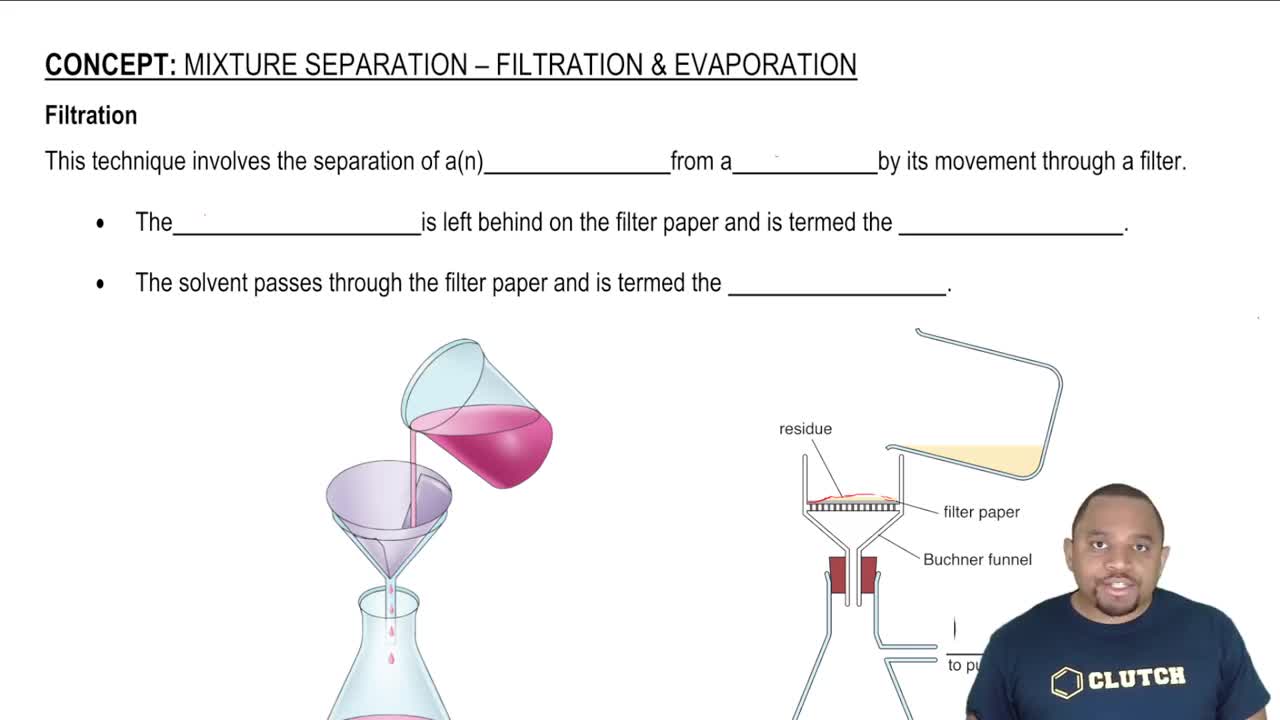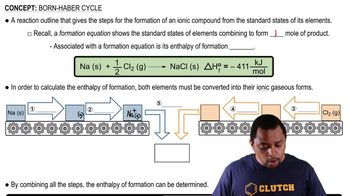At 273 K and 1 atm pressure, 1 mol of an ideal gas occupies 22.4 L. (Section 10.4) (b) Looking at Figure 18.1, we see that the temperature is lower at 85 km altitude than at 50 km. Does this mean that one mole of an ideal gas would occupy less volume at 85 km than at 50 km? Explain.
Ch.18 - Chemistry of the Environment

Brown15th EditionChemistry: The Central ScienceISBN: 9780137542970Not the one you use?Change textbook
Chapter 18, Problem 4
Where does the energy come from to evaporate the esti- mated 425,000 km3 of water that annually leaves the oceans, as illustrated here? [Section 18.3]
 Verified step by step guidance
Verified step by step guidance1
Understand that the energy required for evaporation comes from the sun, which provides the heat necessary to convert liquid water into water vapor.
Recognize that the process of evaporation involves breaking the intermolecular forces between water molecules, which requires energy.
Consider that the sun's energy is absorbed by the ocean's surface, increasing the kinetic energy of water molecules, allowing them to escape into the atmosphere as vapor.
Acknowledge that this process is part of the water cycle, where solar energy drives the evaporation of water from the ocean's surface.
Note that the energy involved in this process is often measured in terms of the heat of vaporization, which is the amount of energy required to convert a given amount of liquid into vapor.

Verified video answer for a similar problem:
This video solution was recommended by our tutors as helpful for the problem above.
Video duration:
53sWas this helpful?
Key Concepts
Here are the essential concepts you must grasp in order to answer the question correctly.
Evaporation
Evaporation is the process by which liquid water transforms into vapor, occurring at the surface of the liquid. This phase change requires energy, typically in the form of heat, which is absorbed from the surrounding environment. Factors such as temperature, humidity, and wind speed influence the rate of evaporation, making it a critical component of the water cycle.
Recommended video:
Guided course

Filtration and Evaporation
Energy Sources for Evaporation
The energy required for evaporation primarily comes from solar radiation, which heats the surface of the oceans. This energy increases the kinetic energy of water molecules, allowing them to overcome intermolecular forces and escape into the atmosphere as vapor. Additionally, heat from the atmosphere and ocean currents can also contribute to the energy needed for this process.
Recommended video:
Guided course

Filtration and Evaporation
Water Cycle
The water cycle describes the continuous movement of water within the Earth and atmosphere, encompassing processes such as evaporation, condensation, precipitation, and runoff. Evaporation plays a vital role in this cycle, as it transfers water from the oceans to the atmosphere, where it can later condense and fall back to the surface as precipitation, thus sustaining ecosystems and weather patterns.
Recommended video:
Guided course

Born Haber Cycle
Related Practice
Textbook Question
5
views
Textbook Question
At 273 K and 1 atm pressure, 1 mol of an ideal gas occupies 22.4 L. (Section 10.4) (c) In which parts of the atmosphere would you expect gases to behave most ideally (ignoring any photochemical reactions)? [Section 18.1]
Textbook Question
The figure shows the three lowest regions of Earth's atmo- sphere.
(d) An aurora borealis is due to excitation of atoms and molecules in the atmosphere 55–95 km above Earth's surface. Which regions in the figure are involved in an aurora borealis?
4
views
Textbook Question
(a) What is the primary basis for the division of the atmosphere into different regions?
3
views
1
rank
